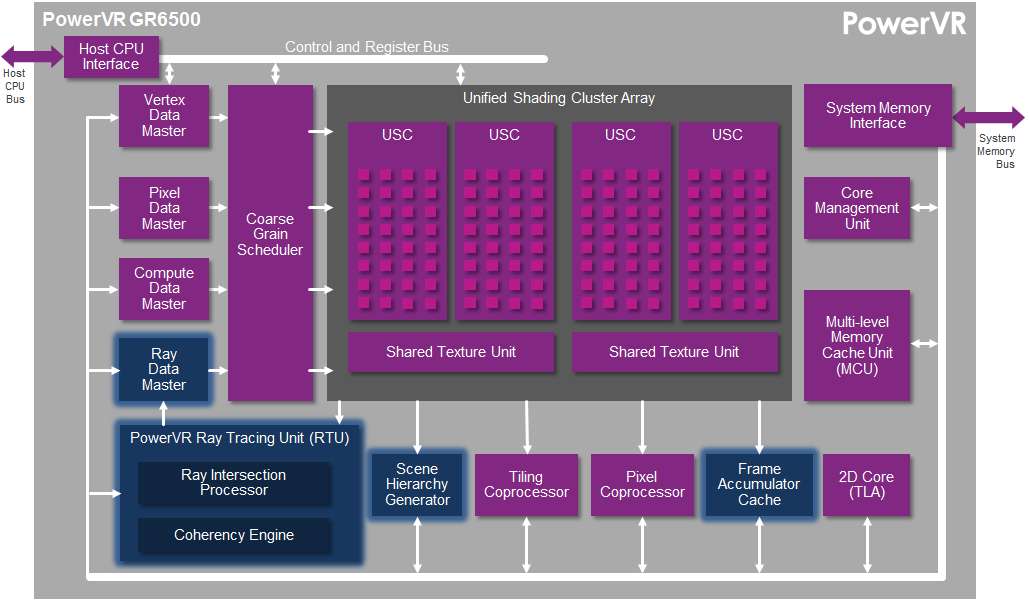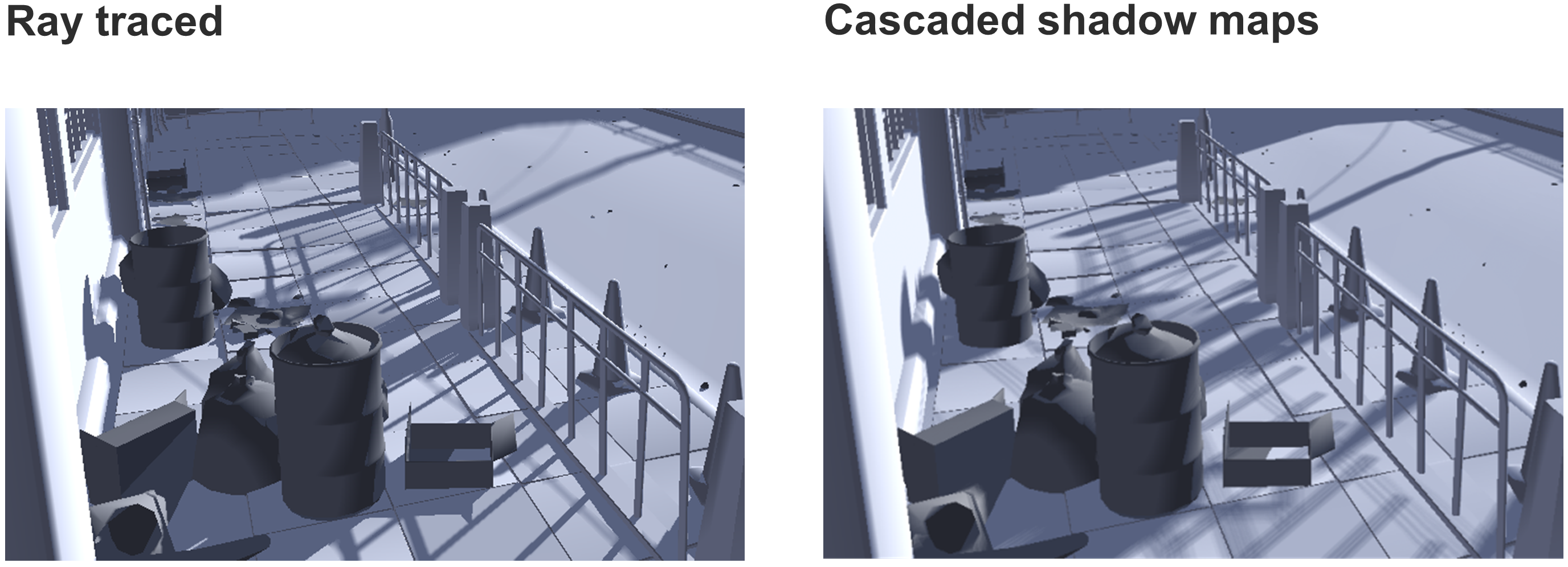Imagination Creates PowerVR GR6500 Low-Power Real-Time Ray Tracing GPU
Imagination built a GPU that is capable of ray tracing in real-time on a low power envelope.
About three years ago, Imagination acquired Caustic Graphics, which owned IP on hardware specifically designed for ray tracing. Since then, Imagination Technologies has been developing a new PowerVR architecture with this ray tracing hardware built-in, and back at GDC a couple of months ago the company announced this architecture, called Wizard. The company's latest announcement is that it has built a GPU based on this architecture – the PowerVR GR6500 ray tracing GPU.
The idea behind the GPU is simple. It's not a GPU that the company intends to sell to consumers, but rather as a proof of concept to prove to its customers that ray tracing can be accomplished in real-time on a low power platform. Following that, Imagination intends to license out the IP to anyone who wants to implement the PowerVR Wizard architecture, meaning that just about anyone will be able to expand on their GPUs or SoCs with the ray tracing hardware. Therefore, it can make its way to mobile SoCs for phones and tablets, but also potentially to your desktop GPU.
When Imagination says that it is a low-power architecture, that's no joke. The company claimed that its ray tracing architecture needs 100 times less power compared to desktop GPUs from AMD or Nvidia, quoting that real-time ray tracing is possible within just 5-10 watts.
Luke Peterson, Imagination's director of research on the PowerVR Ray Tracing project, said, "We approached the problem differently. While others in the industry were focused on solving ray tracing using GPU compute, we came up with a new approach leveraging on our prior expertise in rasterized graphics. This allowed us to challenge assumptions that the rest of the industry took for granted and cleared the way for some major breakthroughs."
Ray tracing is a method of tracing the path that light travels throughout a 3D environment in order to figure out how the scene is lit, where the shadows are cast, and so on, with each pixel on your screen as a starting point of the traced ray. It is the most realistic of image generating techniques, but it comes at the cost of needing a huge amount of processing power. Therefore, video games hardly use it because it is almost impossible to achieve it in real-time on today's hardware while keeping up a decent framerate, without going overboard on hardware.
Over the coming months, Imagination will be working on various tech demos, so we expect to see more from the PowerVR Wizard in due time.
Follow Niels Broekhuijsen @NBroekhuijsen. Follow us @tomshardware, on Facebook and on Google+.
Get Tom's Hardware's best news and in-depth reviews, straight to your inbox.
Niels Broekhuijsen is a Contributing Writer for Tom's Hardware US. He reviews cases, water cooling and pc builds.
-
Wisecracker If it seems too good to be true ... it likely is.Reply
I wish PowerVR well in their endeavors but will reserve judgement until 3rd party verification and 'qualifications' and/or limits ...
-
knowom I'm more than a bit skeptical of the trickle down effect, but who the hell knows. I just don't see other manufacturers adopting this unless directly nudged through competition to do so. The implications are a well enough, but still seems unrealistic.Reply
I highly doubt AMD would have any interest in this either as they could do something similar by just making a PCIe form factor APU all in one system sort of like Intels HDMI all in one design, but more powerful.
Really if they did that coupled with crossfire bridge support and APU socket support they'd have something interesting. Perhaps standard GPU rendering with background cached ray tracing the more you play the game itself the better it gets in area's even if they only ray trace cached player models that could be a big improvement. -
knowom That example is not overly impressive either more complex higher resolution ones would require drastically more power both in the form of performance and efficiency.Reply -
Alexandru Voica Reply"within just 5-10 watts" on what resolution?
Full HD and above, 30 fps and above.
-
Alexandru Voica ReplyIf it seems too good to be true ... it likely is.
I wish PowerVR well in their endeavors but will reserve judgement until 3rd party verification and 'qualifications' and/or limits ...
How about John Carmack?
https://twitter.com/ID_AA_Carmack/status/446021820290842624
https://twitter.com/ID_AA_Carmack/status/446022274332622849 -
ubercake Looking at the images, a combination of the two techniques are necessary to get realistic shadows.Reply -
RedJaron Reply
New AMD GPUs don't need bridges for CFX. They use DMA to do it over PCIe.16270418 said:Really if they did that coupled with crossfire bridge support and APU socket support they'd have something interesting. -
childofthekorn How large is the chip? Will we see this integrated to Mobo's or even on GPU's potentially? This is pretty awesome.Reply


